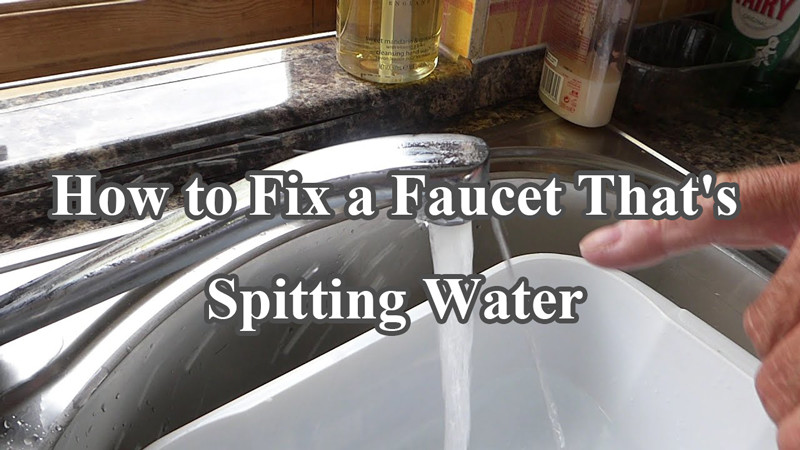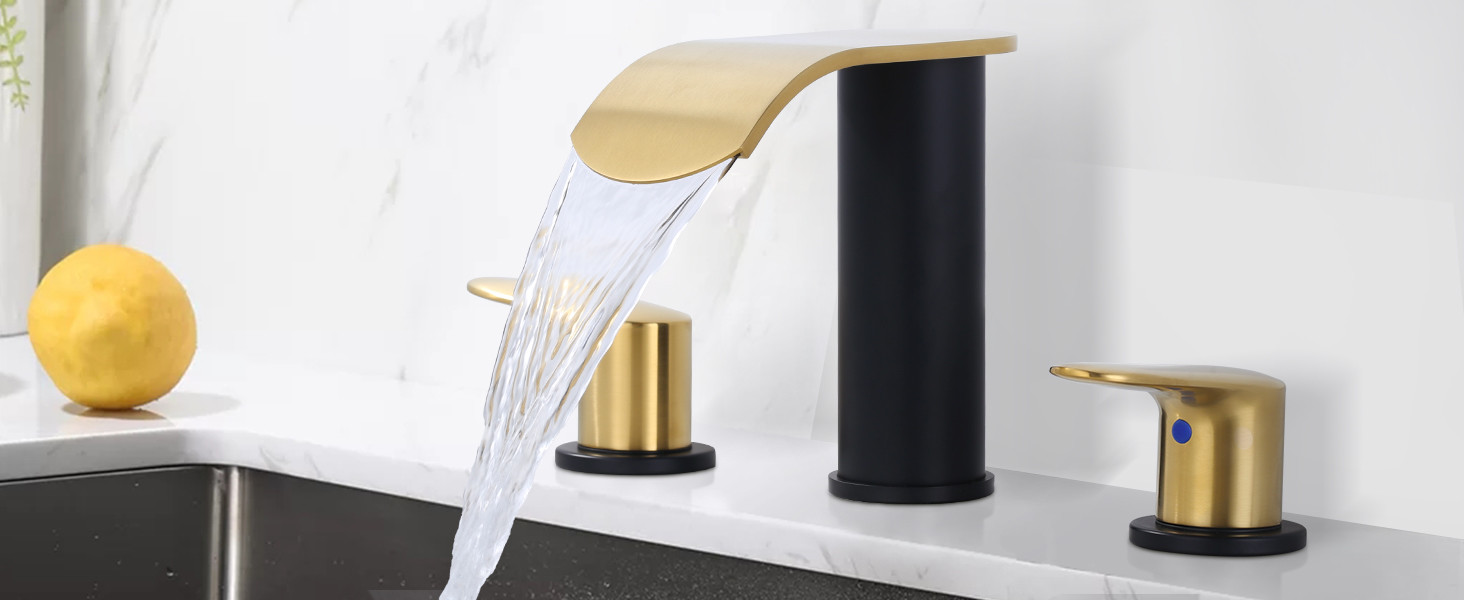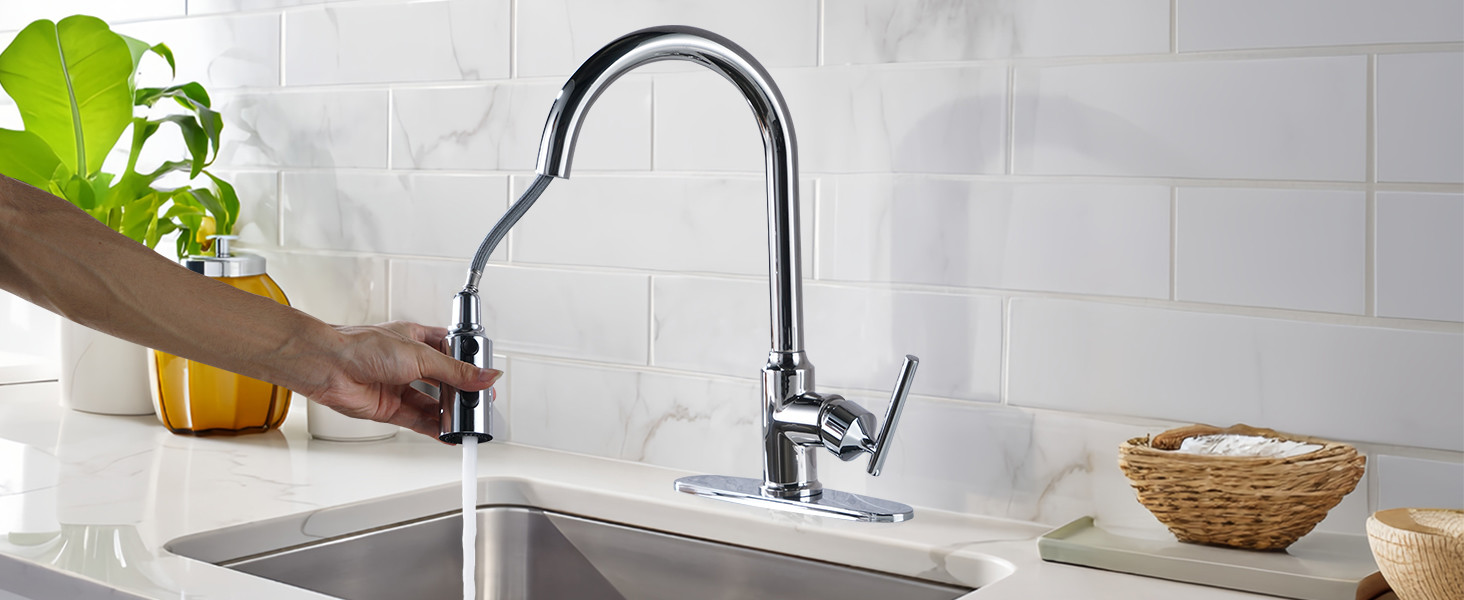
A faucet that’s spitting water can be frustrating and messy. Not only does it create a mess in your sink area, but it also signals that something’s wrong with your plumbing system. If left unchecked, this issue might worsen, leading to more significant problems like leaks, water damage, or even costly repairs. Fortunately, you don’t have to call a plumber just yet. With the right tools and a bit of know-how, you can fix a faucet that’s spitting water on your own.
In this post, we’ll go over the common causes of a spitting faucet, as well as step-by-step instructions on how to troubleshoot and fix the problem. Let’s dive in!
Why Is My Faucet Spitting Water?
Before jumping into the repairs, it’s helpful to understand why the faucet might be spitting water in the first place. There are several common reasons this happens:
Aerator Clogs: Faucets typically have an aerator at the tip, which helps regulate water flow and prevent splashing. If debris, mineral buildup, or sediment gets trapped in the aerator, it can cause the water to come out in an uneven stream, often resulting in a spitting or sputtering effect.
Low Water Pressure: In some cases, low water pressure can cause spitting, as water may not flow evenly through the faucet. This is often the result of a more significant plumbing issue, such as blockages or leaks elsewhere in the system.
Water Supply Issues: Sometimes, spitting water can be linked to issues in the water supply, such as air pockets or interruptions in the flow. When water pressure fluctuates, air can get trapped in the pipes, causing it to spit out through the faucet.
Faulty Faucet Valve: A defective or worn-out valve may prevent the faucet from properly controlling the flow of water, which can result in erratic, spitting water.
Damaged Cartridge or Valve Seat: Faucets with a cartridge or valve seat that has become damaged or worn can also cause irregular water flow. This may happen with older faucets or those that have been exposed to hard water.
How to Fix a Faucet That’s Spitting Water
Now that we know some of the potential causes, here’s a step-by-step guide to fixing a faucet that’s spitting water.
Step 1: Turn Off the Water Supply
Before you start disassembling your faucet, always make sure to turn off the water supply. This will prevent any accidental flooding or water leakage while you work on the faucet.
Locate the shutoff valves: These are usually under the sink. Turn them clockwise to close the valves and stop the water supply.
Test the faucet: After turning off the water supply, turn the faucet on to make sure the water is no longer flowing. This step will also release any leftover water in the lines.
Step 2: Inspect and Clean the Aerator
One of the most common reasons for a spitting faucet is a clogged aerator. Fortunately, cleaning or replacing the aerator is a simple task.
Unscrew the aerator: Use pliers or a hand tool to carefully unscrew the aerator from the end of the faucet. Be gentle to avoid damaging the aerator or the faucet itself.
Inspect the aerator: Check the aerator for signs of mineral buildup, debris, or sediment. If you see any visible clogs or debris, you can proceed to clean it.
Clean the aerator: Soak the aerator in a bowl of vinegar for about 30 minutes. The vinegar will help break down any mineral buildup. After soaking, use a small brush (like an old toothbrush) to scrub away any remaining deposits.
Rinse and reattach: Once the aerator is clean, rinse it thoroughly with water and screw it back onto the faucet.
If the aerator is too damaged or worn out to be cleaned, it’s best to replace it with a new one.
Step 3: Check for Low Water Pressure
If cleaning the aerator didn’t solve the problem, the issue could be related to low water pressure. Here’s how to check for and address low water pressure:
Test other faucets: Turn on other faucets in your home and check if they also exhibit low pressure. If several faucets are affected, the issue might lie with your water supply or the main shutoff valve.
Inspect the water pressure regulator: If you have a water pressure regulator installed in your home (common in areas with high water pressure), it may need adjustment or replacement. Consult a plumber if you suspect an issue with the regulator.
If low water pressure is localized to just one faucet, it’s likely an issue with the faucet’s plumbing or the valve inside the faucet.
Step 4: Inspect the Faucet Valve or Cartridge
A faulty valve or cartridge inside the faucet can cause uneven water flow. If your faucet uses a cartridge system (common in modern faucets), follow these steps:
Turn off the water supply again: Ensure that the water is off before you begin working.
Disassemble the faucet: Depending on the type of faucet you have, you may need to remove the handle and other components to access the cartridge. Most faucets will have screws that need to be removed to expose the internal mechanism.
Remove the cartridge: Once you’ve accessed the cartridge, gently remove it from the faucet. If it’s damaged or worn, it may be causing the spitting water issue.
Replace the cartridge: You can find replacement cartridges at most hardware stores. Match the new cartridge to the old one to ensure compatibility. Install the new cartridge and reassemble the faucet.
If your faucet uses a valve seat, inspect it for any corrosion or damage. Replace the valve seat if necessary.
Step 5: Check for Air in the Pipes
Sometimes, air can get trapped in the plumbing system, especially after the water supply has been turned off and then turned back on. This can cause temporary spitting when the faucet is first used.
Flush the pipes: Turn the faucet on to full pressure and let it run for a minute or two. This will help expel any air from the pipes.
Check the pressure: If the water starts flowing more smoothly, the issue was likely caused by air in the pipes. If not, further investigation may be needed.
Step 6: Call a Plumber (If Needed)
If you’ve followed these steps and the faucet is still spitting water, it might be time to call a plumber. Persistent water flow issues could indicate a deeper plumbing problem, such as a pipe leak, blockages in the main line, or issues with your water supply system.
Conclusion
Fixing a faucet that’s spitting water doesn’t have to be a difficult task. In many cases, the problem can be resolved by cleaning the aerator, checking for low water pressure, or replacing a worn-out cartridge. However, if the problem persists, don’t hesitate to reach out to a professional plumber to avoid more serious issues down the line. By taking care of this problem early, you’ll ensure that your faucet runs smoothly and avoid potential damage to your plumbing system. Happy fixing!
 WOWOW Faucets
WOWOW Faucets





您好!Please sign in